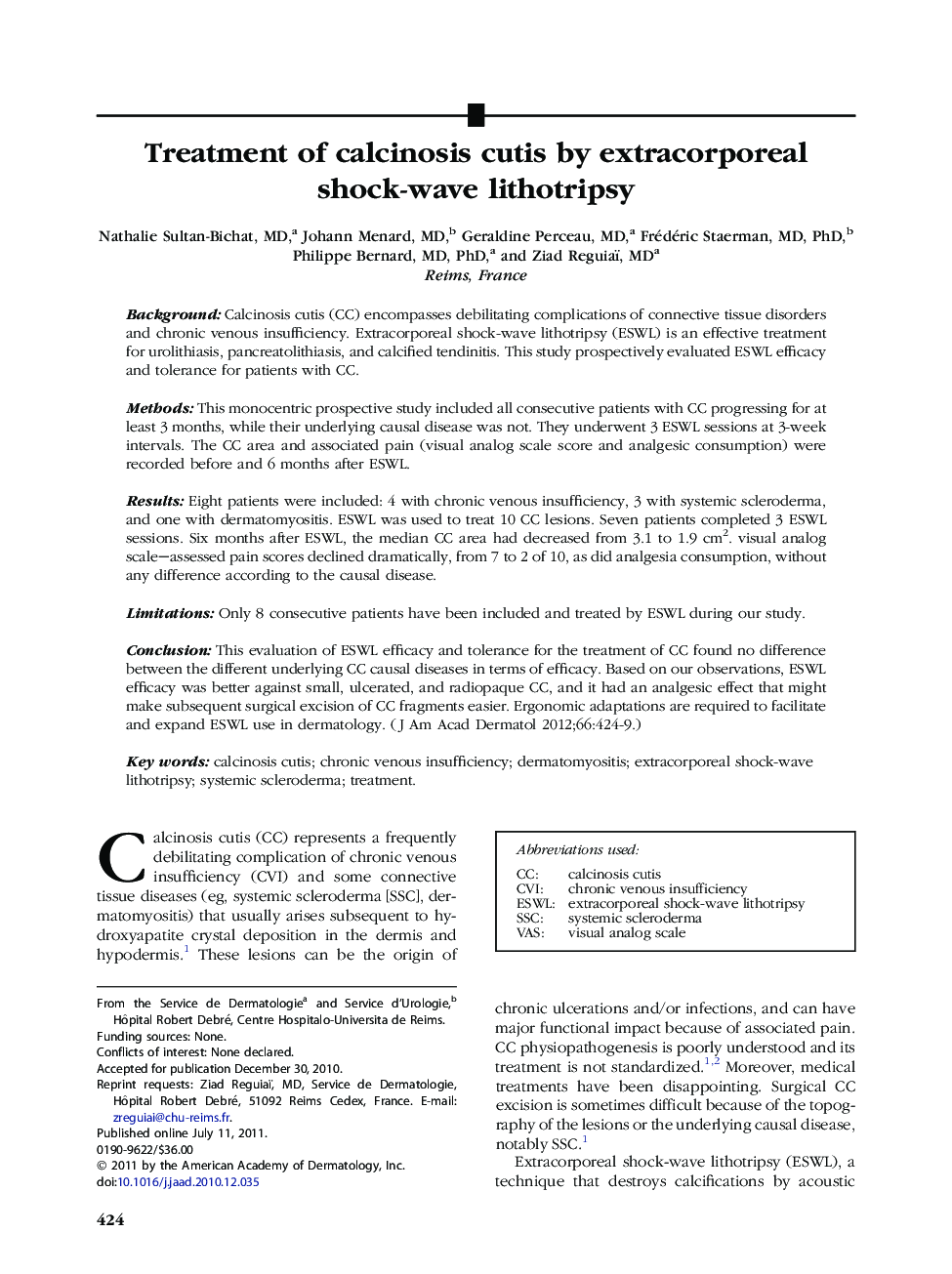| Article ID | Journal | Published Year | Pages | File Type |
|---|---|---|---|---|
| 3207076 | Journal of the American Academy of Dermatology | 2012 | 6 Pages |
BackgroundCalcinosis cutis (CC) encompasses debilitating complications of connective tissue disorders and chronic venous insufficiency. Extracorporeal shock-wave lithotripsy (ESWL) is an effective treatment for urolithiasis, pancreatolithiasis, and calcified tendinitis. This study prospectively evaluated ESWL efficacy and tolerance for patients with CC.MethodsThis monocentric prospective study included all consecutive patients with CC progressing for at least 3 months, while their underlying causal disease was not. They underwent 3 ESWL sessions at 3-week intervals. The CC area and associated pain (visual analog scale score and analgesic consumption) were recorded before and 6 months after ESWL.ResultsEight patients were included: 4 with chronic venous insufficiency, 3 with systemic scleroderma, and one with dermatomyositis. ESWL was used to treat 10 CC lesions. Seven patients completed 3 ESWL sessions. Six months after ESWL, the median CC area had decreased from 3.1 to 1.9 cm2. visual analog scale–assessed pain scores declined dramatically, from 7 to 2 of 10, as did analgesia consumption, without any difference according to the causal disease.LimitationsOnly 8 consecutive patients have been included and treated by ESWL during our study.ConclusionThis evaluation of ESWL efficacy and tolerance for the treatment of CC found no difference between the different underlying CC causal diseases in terms of efficacy. Based on our observations, ESWL efficacy was better against small, ulcerated, and radiopaque CC, and it had an analgesic effect that might make subsequent surgical excision of CC fragments easier. Ergonomic adaptations are required to facilitate and expand ESWL use in dermatology.
